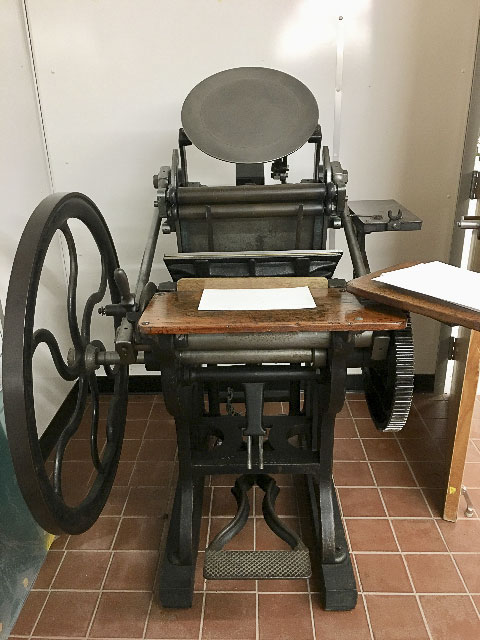George Phineas Gordon’s Platen Job Press
Until 1880, inventors had to submit models along with their patent applications to the United States Patent and Trademark Office. Some models were crudely made but others, like this wooden press, were fine and exacting replicas. Known as the father of the platen press, George Phineas Gordon received his first patent in 1850 and submitted over 50 more in his lifetime. This particular patent, No. 148,050, implemented improvements in the operation of the platen, grippers and ink distribution. Gordon’s platen, or job, press was one of the first truly American contributions to printing technology. The basic and fairly simple platen design was copied extensively. About seventy different manufacturers in the US produced their own versions. In its day, it was used for small printing jobs like handbills, tickets, programs, and business forms. Today, many commercial shops still have a “jobber” for imprinting, numbering or die-cutting; and it is a mainstay with letterpress printers. The Museum has several versions of the Gordon press on display, including one in our workshop, shown here.

Wood Patent Model of George Phineas Gordon’s Platen Job Press

The MoP’s Gordon press
< W. A. Dwiggins: A Life in Design | The Museum of Printing Type Libraries >
Top ↑